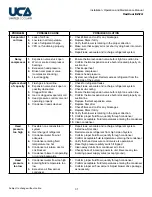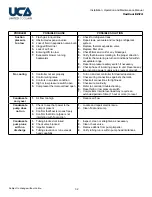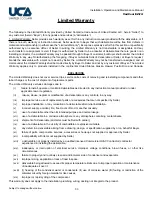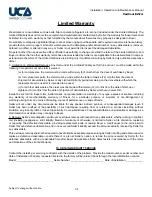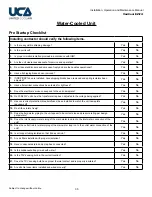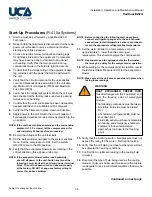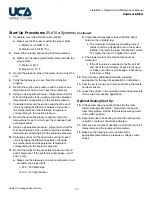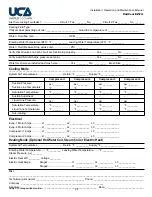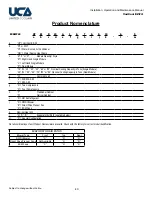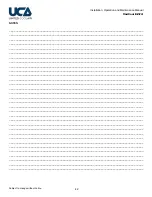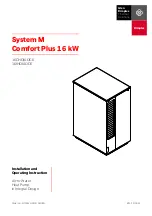
Installation, Operation and Maintenance Manual
VariCool EZ-Fit
27
Subject to change without notice.
IDDP Wheel size Max Wheel RPM Max VFD Hz
Operation
105
5195
60
122
4425
60
135
4038
60
150
3650
60
165
3275
53
182
2979
51
Drain Pan
Every six (6) months, or as learned from the specific
application, check the condensate drain pan, trap and
condensate line to ensure that the condensate is draining
properly If there is any indication that any standing water is
or has been present, the cause needs to be determined and
fixed immediately
Drain pans should be cleaned, as needed, using industry
accepted practices
CAUTION
Clean coils only with cold water and a
suitable detergent or a commercially
available coil cleaner DO NOT use hot
water or steam to clean a coil containing
refrigerant as this may cause a high
pressure situation that could damage
the coil and associated safety devices or
refrigerant components
WARNING
Make sure to follow all safety precautions
when cleaning any coil with a commercial-
ly available coil cleaner Follow all recom-
mendations for safety clothing and gear
Failure to follow all safety instructions
could result in death or serious injury
Evaporator Coil
Finned coils can become “fouled” due to a build up of
contaminants in the air path that are not caught or captured
in the air filters Over time this build up on the fin surface can
reduce heat transfer and increased resistance to air flow
The end result might be higher operating costs or occupant
discomfort
The finned coils in a unit should be checked at least every
six (6) months or more frequently based on experience of
the specific application
Before cleaning any finned coils remove the filters Remove
any large debris or visible dirt accumulation
Protect any controls or sensors that should not be exposed
to water or coil cleaning solutions
Rinse all coils thoroughly after any coil cleaning
Use a suitable fin comb after the coil cleaning to straighten
any bent fins
Condenser
Any fluid that is used to carry the heat away through the
condenser contains, minerals, dust from a cooling tower or
other foreign materials Over time these contaminants will
build up on the walls of the heat exchanger
This scale or fouling will result in a reduction in water flow,
less water temperature difference between inlet and outlet,
high condensing temperature and higher fluid pressure drop
All of these affect the operating performance and efficiency
of the system and need to be addressed The performance
values that were recorded during the initial start-up procedure
will help to determine when maintenance is required
Coaxial heat exchangers will need to be cleaned using a
chemical solution These are available commercially Follow
all manufacturer recommendations and safety warnings
Shell and tube heat exchangers can be mechanically
cleaned Use industry accepted practices to clean the tubes
CAUTION
Confirm that any coil cleaning agents,
detergents or solutions are suitable for
use on a copper tube/aluminum fin coil If
the cleaning agent is to acidic or alkaline,
damage to the coil fins may result



















